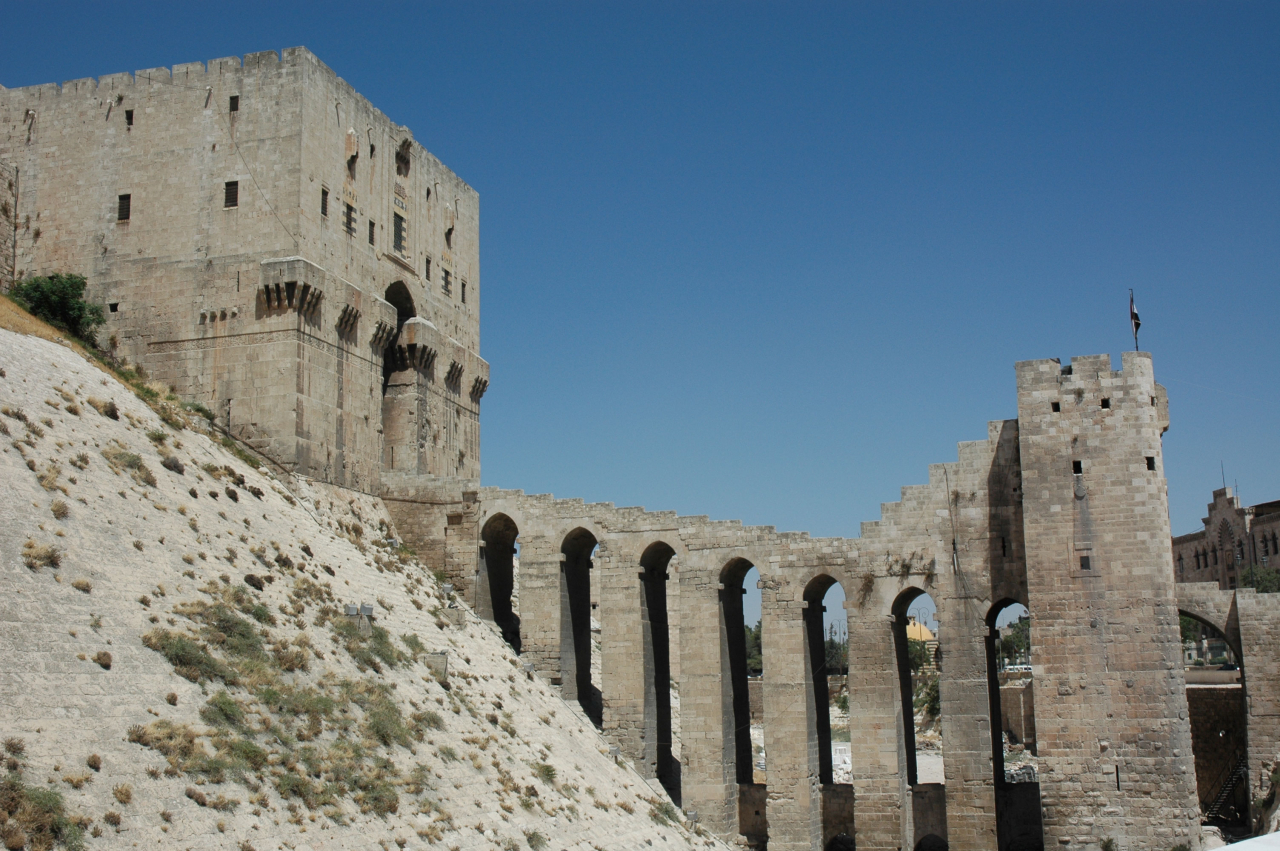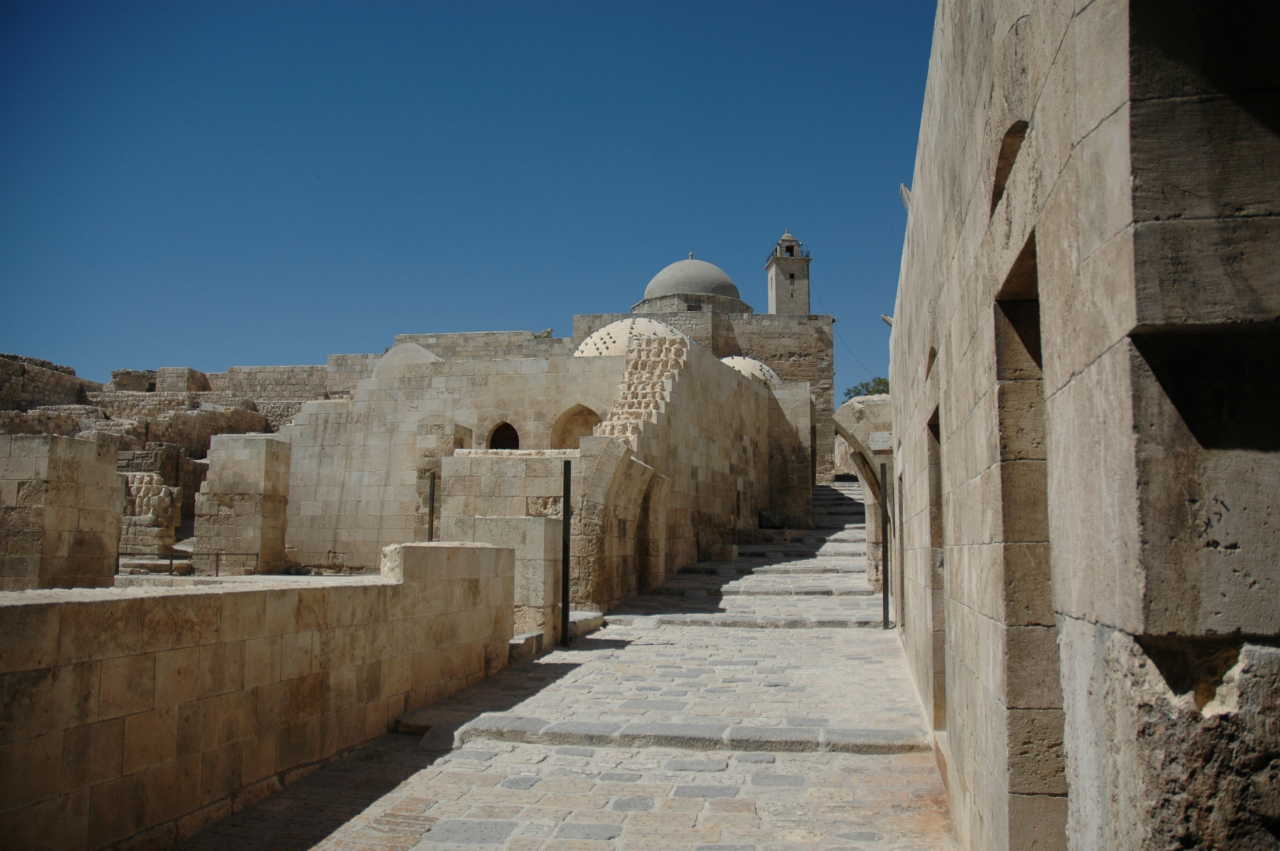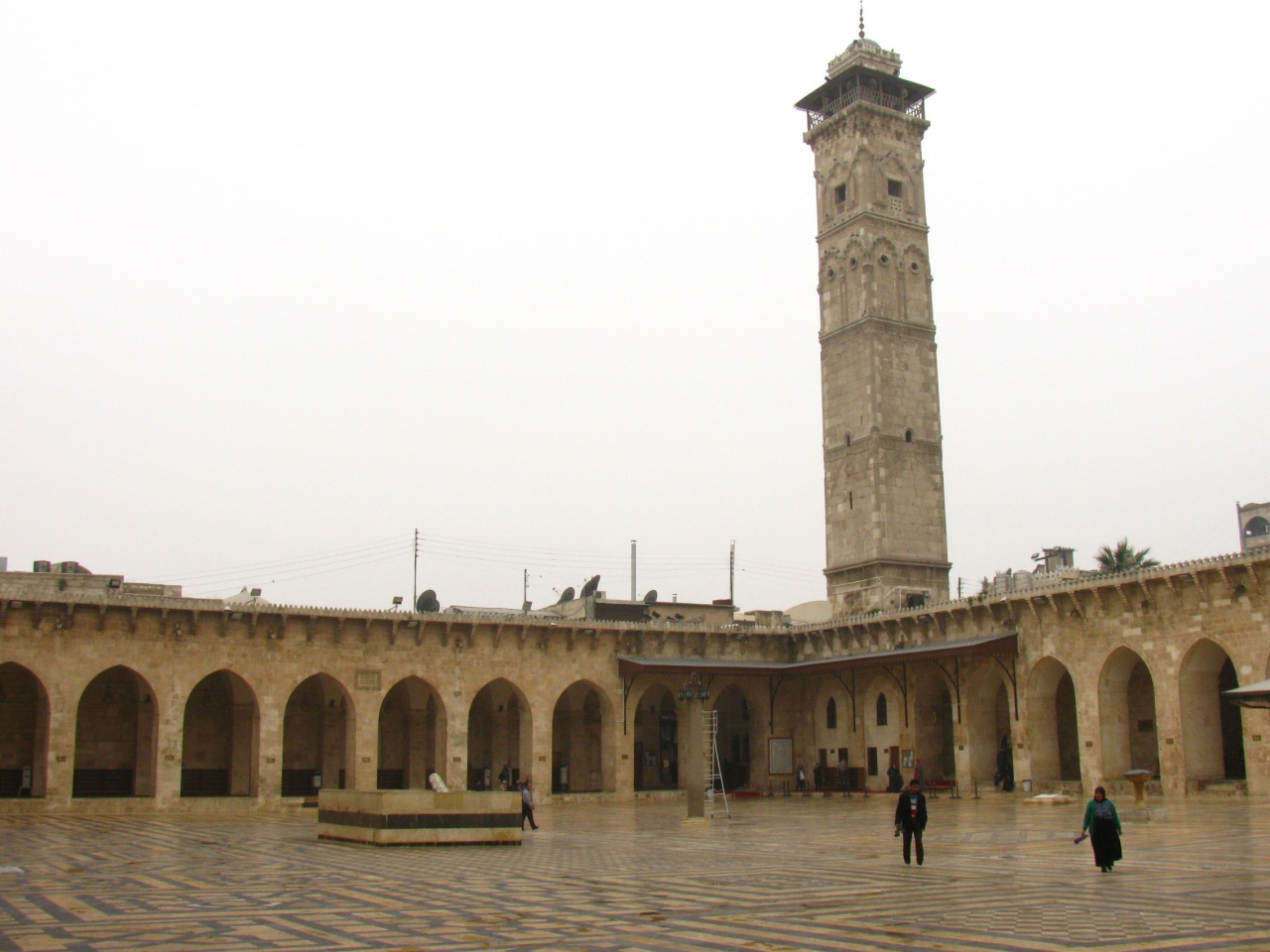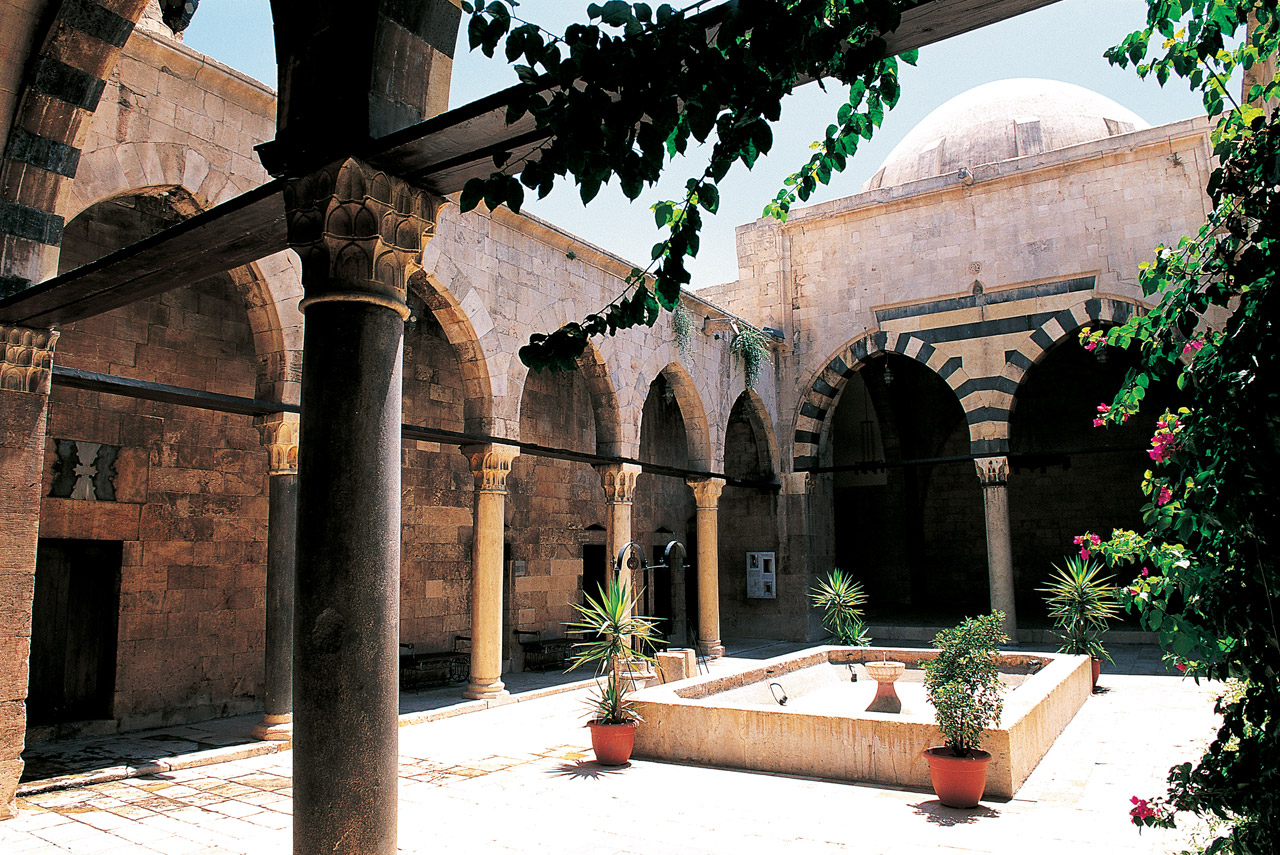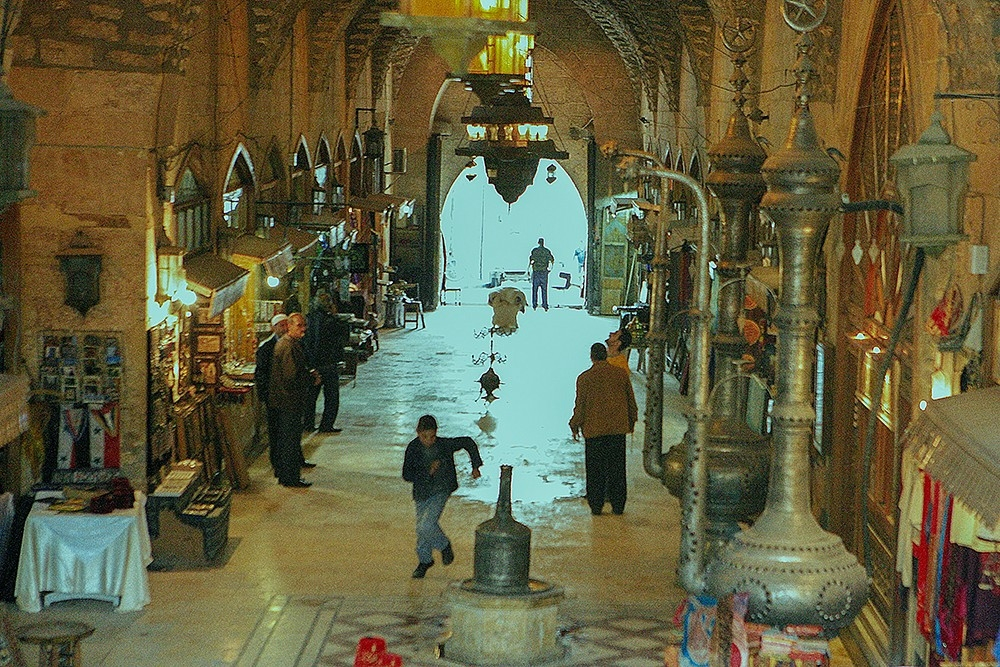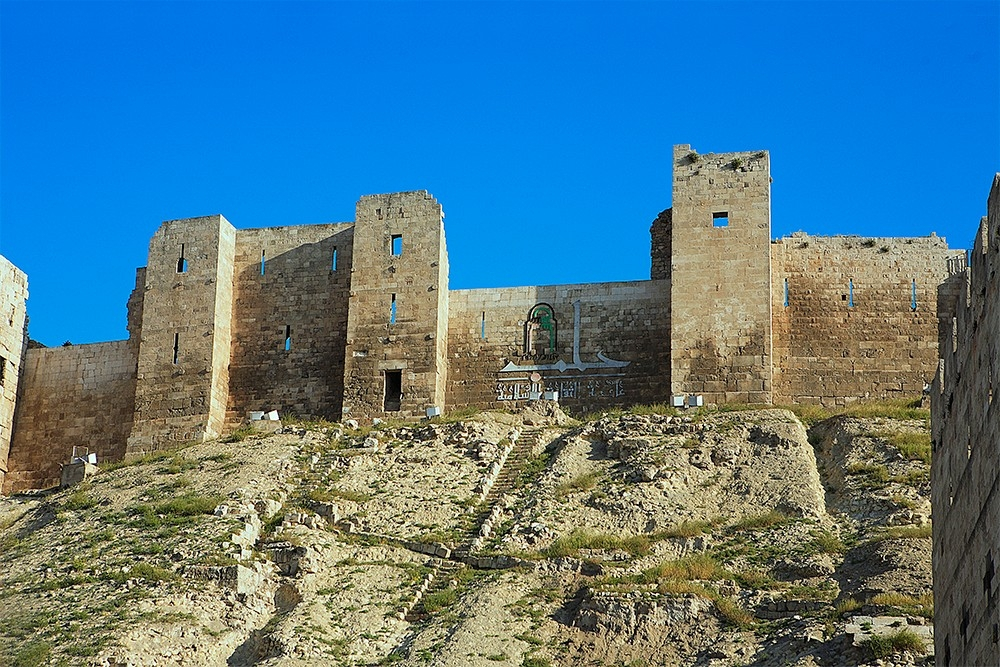Aleppo
© Silvan RehfeldAleppo has stood at the crossroads of trade routes across Syria since at least the 3rd millennium BC, when the city was first mentioned in ancient Syrian manuscripts. It is the largest city in Syria, and is situated on a plateau in the northwest of the country, some 100 kilometres from both the Mediterranean to the west, and the Euphrates River to the east, a location that has kept Aleppo at the centre of international communication and commerce. This is reflected in the historic citadel, which contains one of the largest and best-preserved bazaars in the region, a testimony to the integral role of trade in the city's development.
Considered to be one of the world's oldest continually inhabited cities, Aleppo, or Ḥalab, in Arabic, has changed hands between rival powers many times throughout its long history. The city was conquered by the Seleucids in the 3rd century BC, who named it Beroea, and became increasingly important from this period as a commercial hub connecting the Mediterranean with Central Asia. It became part of the Roman Empire in the 1st century BC, and prospered as a prime destination for merchant caravans, until being pillaged by the Sasanian king Khosrow I in 540 AD.
The city was renamed Halab following its conquest by Muslim troops in 637 AD, and developed as a cultural centre, attracting philosophers, poets and other intellectual luminaries, including the renowned philosopher al-Farabi. It successfully withstood attacks by Crusading armies, and passed into the control of the Ayyubid dynasty in the early 12th century, initiating a period of vibrant economic development. The citadel was rebuilt, the traditional souks and bazaars expanded, and the defensive walls and gates were fortified. Moreover, trading treaties with the medieval state of Venice were established, which allowed Aleppo privileged relations with some of the most active and influential maritime merchants in Europe in this period.
Commercial activity was curtailed in 1260, following the invasion and massacre of the city by the Mongols, and it was not until the incorporation of Aleppo into the Ottoman Empire in 1516 that economic activity was substantially renewed, assisted by the decline of the northern trade routes around the Black Sea. Persian silks and Indian pepper were among the main imports brought to Aleppo by caravan trains from Central Asia, but this trade was also greatly enriched by Syrian products that were on sale in souks throughout the city, and which formed an important addition to the merchants' imported wares. Local products available in Aleppo included textiles and woven cloths, soaps and dyes, hides, wool, cotton, vegetables, fruit and nuts.
A second phase of expansion of Aleppo's city centre took place at this time, involving the extension of souks and the construction of a number of new caravanserais (inns to welcome travelling merchants.) By the 16th and 17th centuries, Aleppo was the third largest city in the Ottoman Empire, and hosted a large number of European merchants, with Venetian, British, Dutch and French consulates and trading offices being established in the city. The al-Joumrok khan (or Customs Caravanserai) dates from the 17th century and was a caravanserai aimed specifically at French, English, and Dutch merchants.
Trade through the city diminished once again in the mid-18th century, following the collapse of the Safavid dynasty in Persia and the accompanying fall in the production of Persian silks. Additionally, the increasingly possibilities of long distance maritime transport made this means of trade more attractive and efficient, undermining the traditional caravan trains that had sustained Aleppo's pivotal position on the ancient trading routes across Syria.
